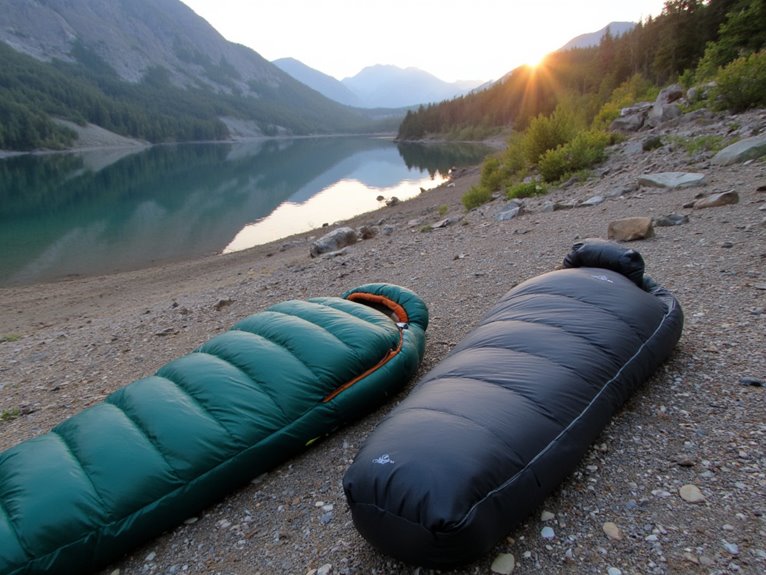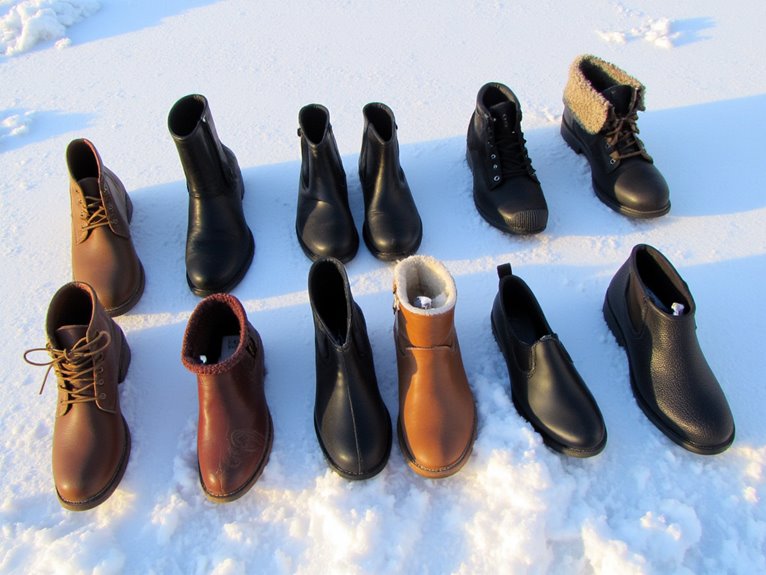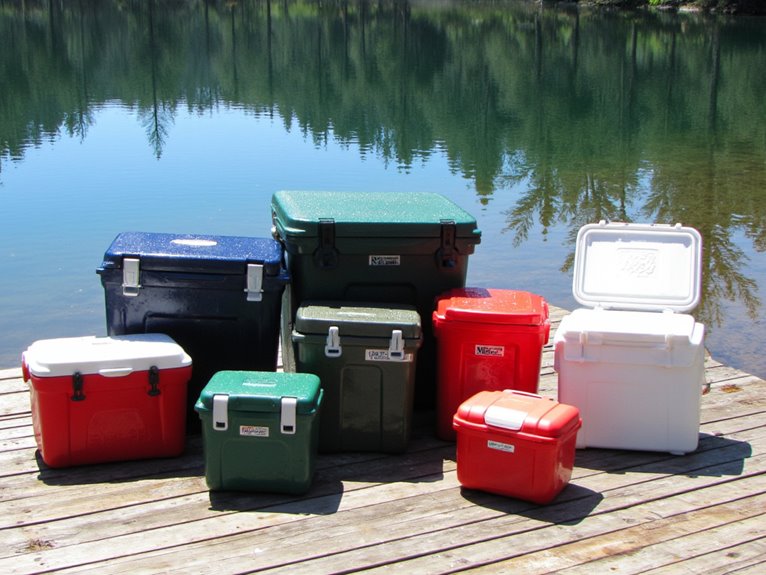How Tough Are Packrafts?
Packrafts are designed to be incredibly resilient, with rugged constructions and durable materials capable of withstanding harsh weather conditions, turbulent waters, and rugged terrain. They can absorb the shock of crashing waves and turbulent currents, and their reinforced floors and sidewalls provide exceptional buoyancy and stability in whitewater and rapids. From traversing inhospitable landscapes to tackling thrilling whitewater routes, packrafts are built to take a beating. But what makes them so tough, and how do they hold up to real-world abuse? The answers lie in their materials, construction, and maintenance.
We are supported by our audience. When you purchase through links on our site, we may earn an affiliate commission, at no extra cost for you. Learn more. Last update on 10th December 2025 / Images from Amazon Product Advertising API.
Durability in Harsh Environments
Operating in unforgiving environments, packrafts are designed to withstand the rigors of harsh weather conditions, turbulent waters, and rugged terrain, ensuring that adventurers can rely on their trusty vessels to navigate even the most inhospitable landscapes.
The durable materials used in their construction, such as heavy-duty nylon and reinforced seams, enable packrafts to withstand the constant barrage of wind, water, and sun exposure.
Additionally, the compact and lightweight design of packrafts allows for easy transportation and deployment in remote areas, making them an ideal choice for adventurers and pioneers.
Withstanding Whitewater and Rapids
Packrafts are built to take a pounding, with reinforced floors and sidewalls that can absorb the shock of crashing waves and turbulent currents, allowing adventurers to ride out the rough stuff with confidence.
When tackling whitewater and rapids, packrafts demonstrate their exceptional buoyancy and stability, gliding effortlessly over rocky bottoms and through churning eddies.
The robust construction and streamlined design enable packrafts to slice through turbulent water, minimizing the impact of collisions with rocks and logs.
Even in the most turbulent rapids, packrafts maintain their integrity, ensuring a safe and exhilarating ride for seasoned paddlers and novice adventurers alike.
With their rugged build and agile performance, packrafts prove to be the ultimate companions for tackling the world's most thrilling whitewater routes.
Material Selection for Toughness
When it comes to packrafting, the material selection process is crucial for withstanding the rigors of whitewater and rapids.
The fabric strength of a packraft is a critical factor in determining its overall toughness, as it directly affects its ability to resist punctures and abrasion.
Moreover, durable coatings can significantly enhance the packraft's resistance to wear and tear, ensuring a safe and reliable performance in challenging water conditions.
Fabric Strength Matters
Selecting the right fabric is crucial, as it directly impacts the durability and performance of a packraft, with the ideal material balancing weight, strength, and water resistance.
The most common fabrics used in packraft construction are nylon, polyester, and polyurethane-coated materials.
Nylon is a popular choice due to its high strength-to-weight ratio, making it an excellent option for ultralight packrafts.
Polyester, on the other hand, offers superior abrasion resistance, making it ideal for high-wear areas.
Polyurethane-coated materials provide exceptional water resistance and are often used in high-performance packrafts.
When choosing a fabric, it's essential to weigh factors such as tear strength, puncture resistance, and UV degradation to guarantee the packraft can withstand the demands of rugged wilderness adventures.
Durable Coatings Count
Coatings play a critical role in enhancing the durability of packrafts, as they serve as the first line of defense against abrasion, UV degradation, and water damage.
A durable coating can substantially prolong the lifespan of a packraft, ensuring it withstands the rigors of rugged terrain and harsh environmental conditions.
When selecting a packraft, look for coatings made from high-quality materials, such as polyurethane or silicone-based formulas, which offer superior resistance to abrasion and UV degradation.
A good coating should also be flexible, allowing it to stretch and conform to the packraft's shape without cracking or peeling.
Testing the Limits of Packrafts
Pushing a packraft to its limits requires a deep understanding of its construction, materials, and design, as well as a willingness to venture into uncharted waters. To truly test a packraft's mettle, one must be prepared to take it to the edge of its capabilities, and sometimes beyond.
Rocky Landings: Intentionally beaching a packraft on rocky shores or shallow water to assess its durability against abrasive surfaces.
Whitewater Wrecking: Paddling through turbulent rapids to evaluate its stability and buoyancy in high-stress conditions.
Overloading: Exceeding recommended weight capacities to see how the packraft responds to excessive stress.
Real-World Examples of Packraft Abuse
As I reflect on my own packrafting escapades, I recall a particularly hair-raising incident on the turbulent waters of the Colorado River, where I intentionally put my trusty packraft through a maelstrom of whitewater rapids, dodgy rock gardens, and submerged logs.
The packraft withstood the punishment, emerging unscathed despite being pinned against rocks, dragged over gravel bars, and submerged in torrential currents.
Another instance saw me piloting a narrow, boulder-strewn creek, where the packraft's durable hull absorbed the impact of multiple rock strikes.
These real-world examples demonstrate the remarkable resilience of packrafts, which can withstand extreme conditions and emerge unscathed.
Such experiences have bolstered my confidence in the durability of these incredible watercraft.
Maintenance for Long-Term Durability
As packraft enthusiasts, we're aware that our trusty vessels can withstand the rigors of rugged adventure, but only if we commit to regular maintenance routines.
A well-maintained packraft is not only safer, but also more durable and efficient.
Regular Cleaning Schedules
A consistent cleaning schedule is essential for maintaining the durability and performance of your packraft, as dirt, grime, and UV rays can gradually degrade the material and compromise its integrity over time. Regular cleaning helps prevent the buildup of dirt and grime, reducing the risk of damage and prolonging the lifespan of your packraft.
To maintain your packraft, follow these cleaning schedule guidelines:
- After each use: Rinse your packraft with fresh water to remove dirt and debris.
- Weekly: Use a mild soap and soft-bristled brush to gently scrub the packraft, paying attention to areas with heavy dirt buildup.
- Monthly: Apply a UV protectant to the packraft's material to prevent damage from UV rays.
Material Inspection Routine
Regularly inspecting your packraft's material is vital for identifying potential issues before they become major problems, allowing you to take proactive measures to maintain its long-term durability.
A thorough material inspection routine should be conducted at least every three months, or after each use in harsh environments.
Start by visually examining the hull, tubes, and floor for signs of abrasion, cracks, or punctures.
Check the seams, welds, and bonding for any signs of separation or weakness.
Inspect the fabric for UV damage, fading, or discoloration.
Finally, inspect the valves, attachments, and accessories for any signs of wear or damage.





